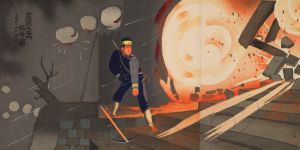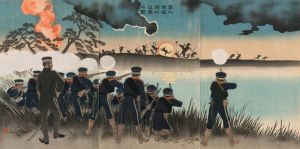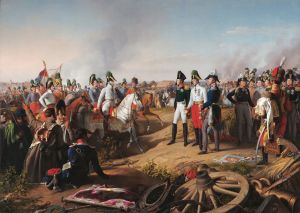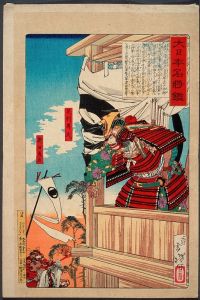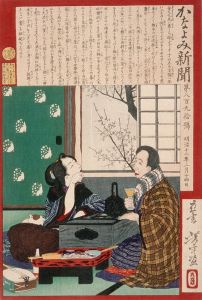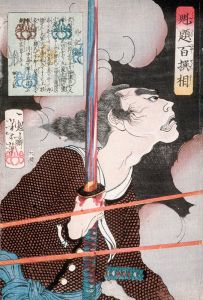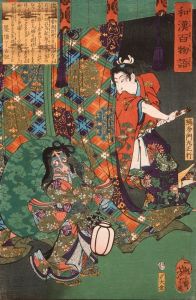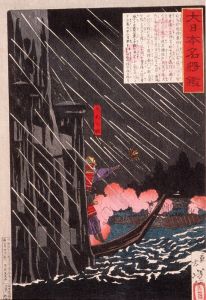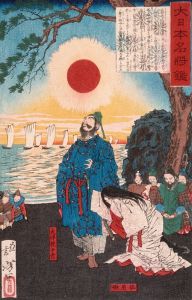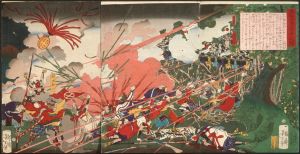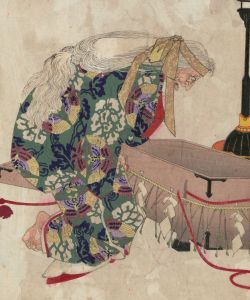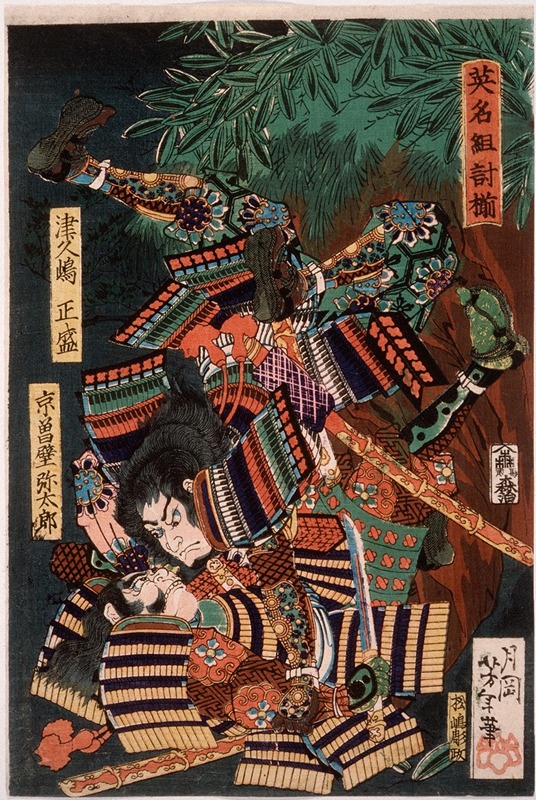
Tsukushima Masamori Fighting Kyōsokabe Yatarō
A hand-painted replica of Tsukioka Yoshitoshi’s masterpiece Tsukushima Masamori Fighting Kyōsokabe Yatarō, meticulously crafted by professional artists to capture the true essence of the original. Each piece is created with museum-quality canvas and rare mineral pigments, carefully painted by experienced artists with delicate brushstrokes and rich, layered colors to perfectly recreate the texture of the original artwork. Unlike machine-printed reproductions, this hand-painted version brings the painting to life, infused with the artist’s emotions and skill in every stroke. Whether for personal collection or home decoration, it instantly elevates the artistic atmosphere of any space.
Tsukushima Masamori Fighting Kyōsokabe Yatarō is a woodblock print by the renowned Japanese artist Tsukioka Yoshitoshi, who is celebrated for his innovative and dynamic approach to the traditional ukiyo-e art form. Yoshitoshi, active during the late Edo and early Meiji periods, is often credited with revitalizing the ukiyo-e genre during a time when it was facing decline due to the advent of photography and Western art influences.
This particular print is part of Yoshitoshi's series "New Forms of Thirty-Six Ghosts" (Shinkei Sanjūrokkaisen), which was published between 1889 and 1892. The series is known for its imaginative depictions of supernatural themes, drawing from Japanese folklore, history, and literature. Yoshitoshi's work in this series is characterized by its dramatic compositions, vivid colors, and intricate details, which capture the viewer's imagination and convey a sense of mystery and otherworldliness.
In Tsukushima Masamori Fighting Kyōsokabe Yatarō, Yoshitoshi illustrates a dramatic scene of combat between two historical figures, Tsukushima Masamori and Kyōsokabe Yatarō. The print showcases Yoshitoshi's skill in portraying movement and emotion, as well as his ability to blend realism with fantastical elements. The figures are depicted in mid-action, with dynamic poses and intense expressions that convey the tension and energy of the battle.
Yoshitoshi's use of color and line work in this print is particularly noteworthy. The bold, contrasting colors highlight the figures against the background, drawing the viewer's attention to the central action. The intricate line work adds depth and texture to the composition, enhancing the sense of realism and drama. This attention to detail is a hallmark of Yoshitoshi's style and contributes to the enduring appeal of his work.
The historical context of the print is rooted in the samurai culture of Japan, which has long been a source of inspiration for artists and storytellers. Samurai were members of the warrior class in feudal Japan, known for their martial skills, strict code of honor, and loyalty to their lords. The depiction of samurai in art often emphasizes themes of bravery, loyalty, and the struggle between good and evil, which are evident in Yoshitoshi's portrayal of the battle between Tsukushima Masamori and Kyōsokabe Yatarō.
Tsukioka Yoshitoshi's contribution to the ukiyo-e tradition is significant, as he managed to preserve and transform the art form during a period of great change in Japan. His work is characterized by a unique blend of traditional techniques and modern sensibilities, which has earned him a lasting legacy in the history of Japanese art. The "New Forms of Thirty-Six Ghosts" series, including the print of Tsukushima Masamori Fighting Kyōsokabe Yatarō, remains a testament to Yoshitoshi's artistic vision and his ability to capture the imagination of audiences both in his time and today.
Overall, Tsukushima Masamori Fighting Kyōsokabe Yatarō exemplifies Yoshitoshi's mastery of the woodblock print medium and his innovative approach to storytelling through art. The print is a vivid representation of the themes and styles that define Yoshitoshi's work, making it a valuable piece for understanding the evolution of ukiyo-e and the cultural history of Japan.






